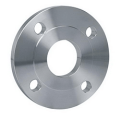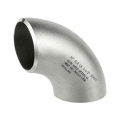High-Efficiency Heat Exchanger Tubes: The 4-Start Spiral Design with 6.35mm Pitch
In the realm of industrial heating and cooling systems, the efficiency of heat exchangers plays a pivotal role in determining the overall performance and energy consumption of the entire setup. Among the various components that contribute to this efficiency, heat exchanger tubes stand out as critical elements. Today, we delve into the specifics of a remarkable innovation in this field: the 4-start spiral heat exchanger tube with a 6.35mm pitch.
Understanding the 4-Start Spiral Design
The term “4-start spiral” refers to the geometry of the tube’s internal structure. Unlike traditional smooth tubes, the 4-start spiral design incorporates four helical ridges running along the inner surface of the tube. This spiral configuration is not merely an aesthetic choice but a strategic enhancement aimed at boosting thermal performance.
The spiral ridges induce a swirling motion in the fluid flowing through the tube. This turbulence significantly improves the mixing of the fluid, ensuring a more uniform temperature distribution and reducing the likelihood of hotspots or cold spots. Consequently, the heat transfer coefficient between the fluid and the tube wall is substantially increased, leading to more efficient heat exchange.
The Significance of the 6.35mm Pitch
The pitch, which is the distance between two consecutive turns of the spiral, is set at 6.35mm in this design. This specific measurement is crucial as it strikes an optimal balance between fluid turbulence and pressure drop.
A smaller pitch would create more intense turbulence but could also result in a higher pressure drop, requiring more energy to pump the fluid through the tube. On the other hand, a larger pitch might reduce the pressure drop but at the cost of diminished turbulence and, consequently, lower heat transfer efficiency. The 6.35mm pitch is the result of meticulous engineering calculations, ensuring that the benefits of enhanced heat transfer are maximized while keeping the pressure drop within acceptable limits.
Advantages of the 4-Start Spiral, 6.35mm Pitch Tubes
Enhanced Heat Transfer: As mentioned, the spiral design promotes turbulence, leading to better heat transfer between the fluid and the tube. This means that for the same amount of heat exchange, these tubes can be shorter or require less fluid flow compared to traditional tubes.
Reduced Fouling: The swirling action of the fluid also helps in minimizing the deposition of impurities on the tube wall. This reduces fouling, which is a common issue in heat exchangers that can significantly degrade performance over time.
Energy Efficiency: With improved heat transfer and reduced fouling, the overall energy consumption of the heat exchanger system is lowered. This not only translates to cost savings but also contributes to a smaller carbon footprint.
Compact Design: Due to their high efficiency, these tubes allow for more compact heat exchanger designs. This is particularly beneficial in applications where space is at a premium.
Applications
The 4-start spiral, 6.35mm pitch heat exchanger tubes find applications in a wide range of industries, including:
Refrigeration and Air Conditioning: Where efficient heat exchange is crucial for maintaining optimal temperatures.
Chemical Processing: Handling various fluids with different thermal properties.
Power Generation: In condensers and other heat exchange equipment where maximizing efficiency is key.
HVAC Systems: Providing effective heating and cooling in residential, commercial, and industrial settings.
Conclusion
The 4-start spiral heat exchanger tube with a 6.35mm pitch represents a significant advancement in heat exchange technology. By combining an innovative spiral design with an optimized pitch, these tubes offer superior thermal performance, reduced fouling, and energy savings. As industries continue to seek more efficient and sustainable solutions, such high-efficiency heat exchanger tubes are poised to play an increasingly important role in shaping the future of thermal management systems.




